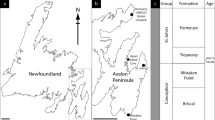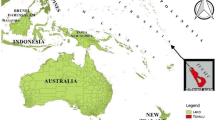Abstract
Since the Neolithic, humans have gathered along coastal plains, where they had to face sea level rise and subsidence without the technology to oppose these processes. When sea level stabilized, approx. 6.000 yr. B.P., coastal colonization was allowed, but where mountain deforestation was carried out river sediment input increased tremendously: settlements were disconnected from the shore and harbour siltation occurred. Shore erosion was a limited process at the time and local solutions were adopted: clay dikes, wood piles, fascinates and rock revetments. Along the Mediterranean, in China and Japan the construction of more complex structures has been documented since the Middle Ages. Further human development, with river bed quarrying, wetland reclamation, dam construction and mountain re-afforestation, favoured a coastal erosion that nowadays threatens most world coasts. From the Venetian “Murazzi” to the recent 114-km-long concrete element defence at the Yellow river delta, shore protection structures evolved following the different needs (protect coastal communication routes, urban and industrial settlements, tourist resorts). Beach nourishment, previously performed with inland quarried materials, is now intensively carried out with marine aggregates. The vernacular solution, left to undeveloped countries, has been recently revaluated by “green engineering”. However, with Sea Level Rise, the debate of whether to defend, accommodate or retreat is open.





Similar content being viewed by others
References
Augustinus PGEF (1988) Suriname. In: Walker HJ (ed) Artificial structures and shorelines. Kluver Academic Publishers, Dordrecht, pp 689–693
Behre K-E (2004) Coastal development, sea-level change and settlement history during the later Holocene in the Clay District of lower Saxony (Niedersachsen), northern Germany. Quat Int 112:37–53
Berlin X, Prouteua E, Letetrel C (2013) A significant increase in wave height in the North Atlantic Ocean over the 20th century. Glob Planet Chang 106:77–83
Bird ECF (1996) Beach management. Wiley and Sons, Chichester, 281 pp
Burns TJ, Kick EL, Murray DA, Murray DA (1994) Demography, development and deforestation in a world-system perspective. Int J Comp Sociol 35:221
Correa ID, Gonzalez JL (2000) Coastal erosion and village relocation: a Colombian case study. Ocean Coast Manag 43:51–64
De Moor G (1988) Belgium. In: Walker HJ (ed) Artificial structures and shorelines. Kluver Academic Publishers, Dordrecht, pp 115–125
Grillo S (1989) Venezia, le difese a mare. Arsenale Editrice, Venezia
Han Z, Dai Z (2002) Reclamation and river training in the Quintang estuary. In: Chen J, Eisma D, Hotta K, Walker HJ (eds) Engineered coasts. Kluwer Academic Press, Dordrecht, pp 121–138
Hanson H, Brampton A, Capobianco M, Dette HH, Hamm L, Laustrup C, Lechua A, Spanhoff R (2002) Beach nourishment projects, practices, and objectives - a European overview. Coast Eng 47:81–111
Hughes JD, Thirgood JV (1982) Deforestation, erosion, and forest management in ancient Greece and Rome. J For 29:60–75
IPCC (2014) In: Pachauri RK, Meyer LA (eds) Climate Change 2014: Synthesis report. Contribution of Working Groups I, II and III to the Fifth Assessment Report of the Intergovernmental Panel on Climate Change. Intergovernmental Panel on Climate Change. IPCC, Geneva, pp 1–151
Jiang W, Tao C (2002) The seawall in Quintang estuary. In: Chen J, Eisma D, Hotta K, Walker HJ (eds) Engineeren coasts. Kluwer Academic Press, Dordrecht, pp 139–150
Koike K (1988) Japan. In: Walker HJ (ed) Artificial structures and shorelines. Kluver Academic Publishers, Dordrecht, pp 317–330
Mörner N-A (1996) Sea level variability. Zeitschrift fur geomorphology, N.F. Suppl-Bd 102:223–232
Mourtzas ND (2012) A palaeogeographic reconstruction of the seafront of the ancient city of Delos in relation to upper Holocene sea level changes in the central Cyclades. Quat Int 250:3–18
Neil R (1989) The holocene. An environmental history. Basil Blackwell, Oxford, pp 227
Nicholls RJ (2002) Rising sea levels: potential impacts and responses. In Hester R. And Harrison R.M. Ed., global Environmental changes. Issues in Environmental science and technology, Royal Soc. of chemistry. Cambridge 17:83–107
Nordstrom KF (2014) Living with shore protection structures: a review. Estuar Coast Shelf Sci 150:11–23
Pranzini E (1989) A model for cuspate delta erosion. 6th Symp. On coastal and Ocean management/ASCE. Charleston, SC. Coastal Zone 89:4345–4357
Pranzini E (2007) Airborne LIDAR survey applied to the analysis of the historical evolution of the Arno River delta (Italy). J Coast Res SI 50:400–409
Pranzini E, Williams AT (Eds.) (2013) Coastal erosion and protection in Europe. Earthscan/Routledge, 454 pp
Stive, MJF, de Schipper, MA, Luijendijk, AP, Aarninkhof, SGJ, van Gelder-Maas, C., van Thiel de Vries, JSM, de Vries S., Henriquez, M., Mark, S., Ranasinghe, R., 2013. A new alternative to saving our beaches from sea-level rise: the sand engine. J Coast Res 29: 1001–1008.
Syvitski JP, Vörösmarty CJ, Kettner AJ, Green P (2005) Impact of humans on the flux of terrestrial sediment to the global Coastal Ocean. Science 5720:376–380
Turney CSM, Brown H (2007) Catastrophic early Holocene sea level rise, human migration and the Neolithic transition in Europe. Quat Sci Rev 26:2036–2041
Williams AT, Rangel-Buitrago N, Pranzini E, Anfuso G (2017) The management of coastal erosion. Ocean Coast Manag. doi:10.1016/j.ocecoaman.2017.03.022
Zunica M (1971) Le spiagge del Veneto. Ricerche sulle variazioni delle spiagge italiane. Consiglio Nazionale delle Ricerche, Tipografia Antoniana, Padova, 145 pp
Author information
Authors and Affiliations
Corresponding author
Rights and permissions
About this article
Cite this article
Pranzini, E. Coastal erosion and shore protection: A brief historical analysis. J Coast Conserv 22, 827–830 (2018). https://doi.org/10.1007/s11852-017-0521-9
Received:
Revised:
Accepted:
Published:
Issue Date:
DOI: https://doi.org/10.1007/s11852-017-0521-9




